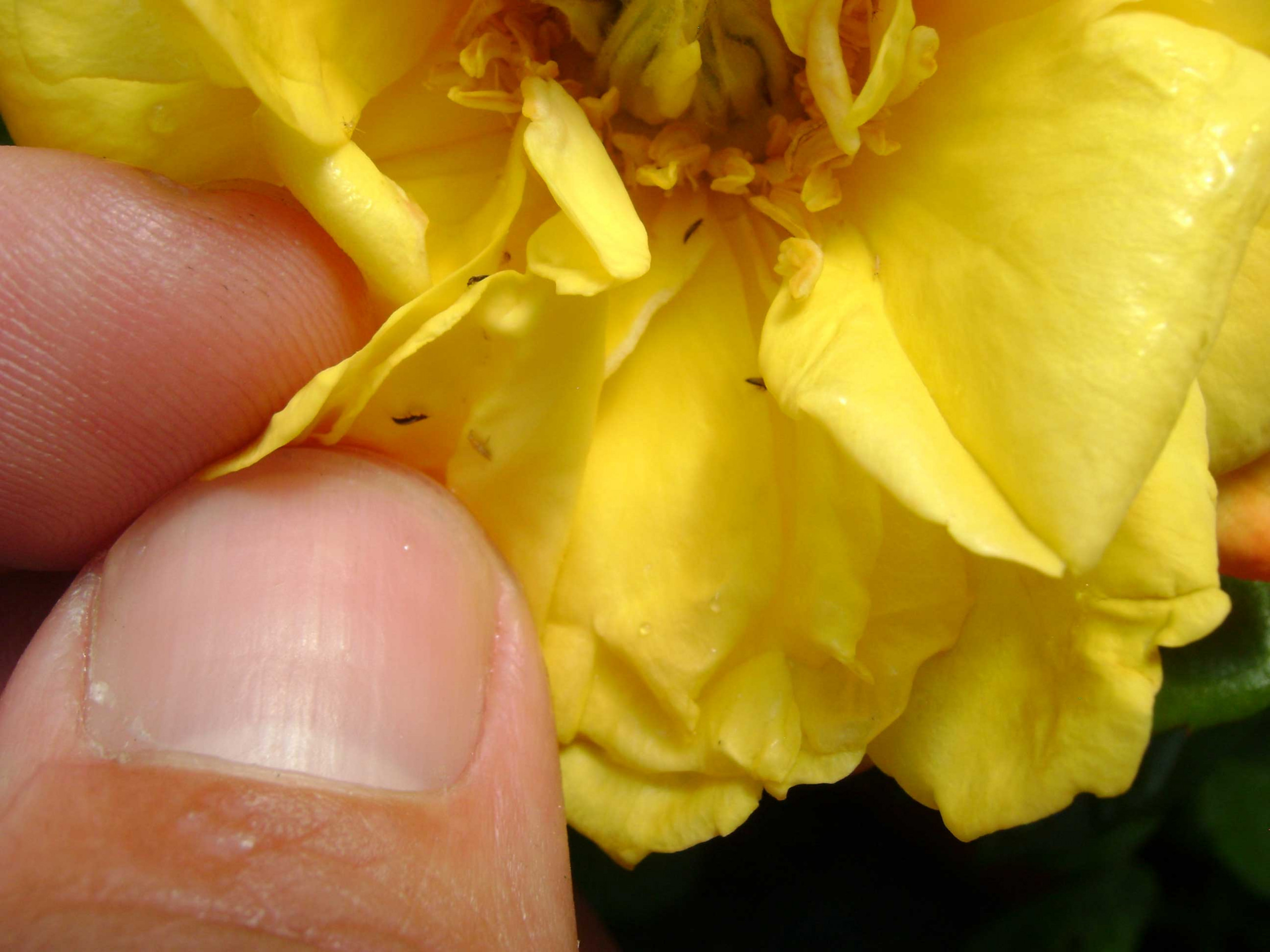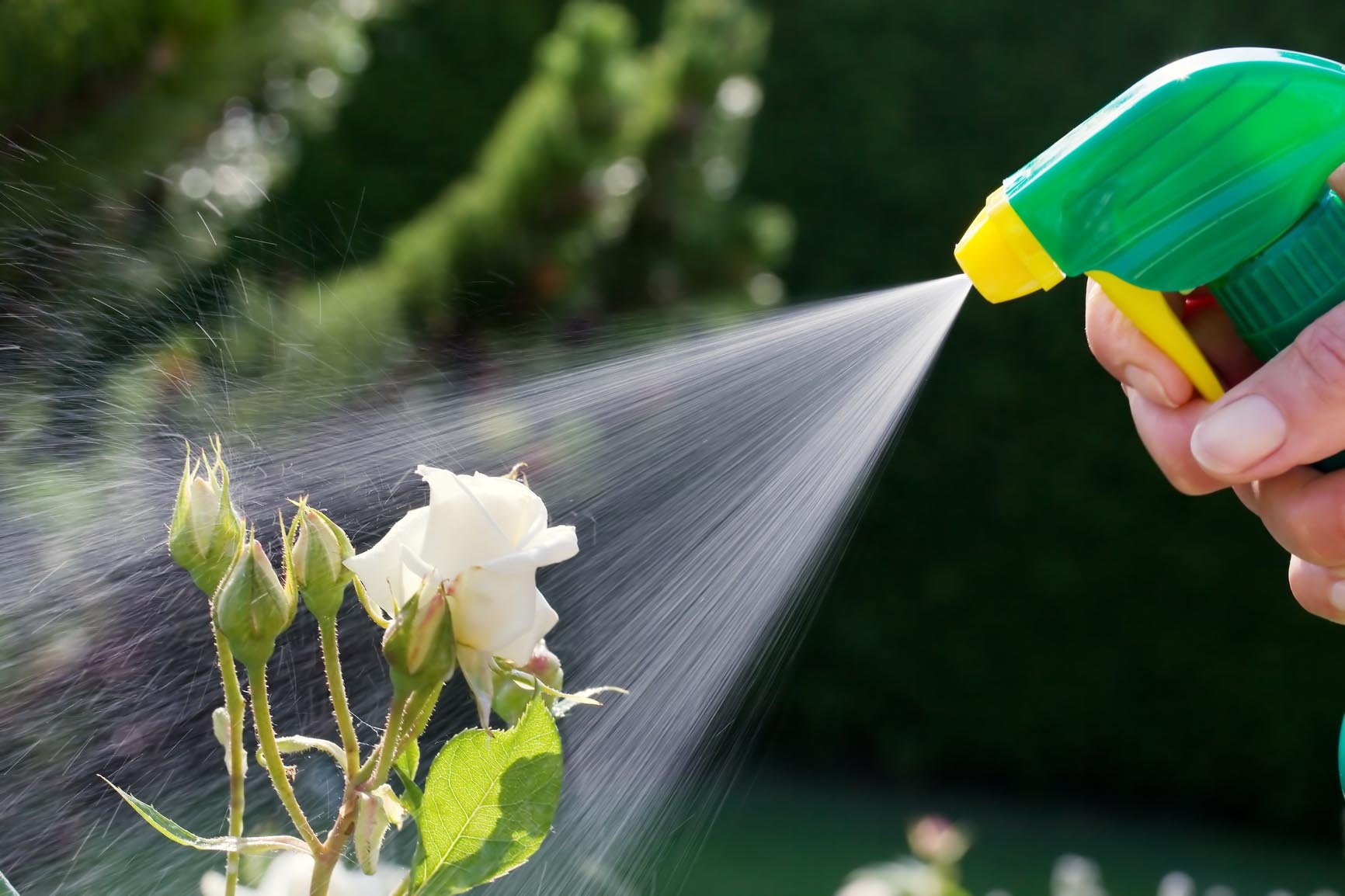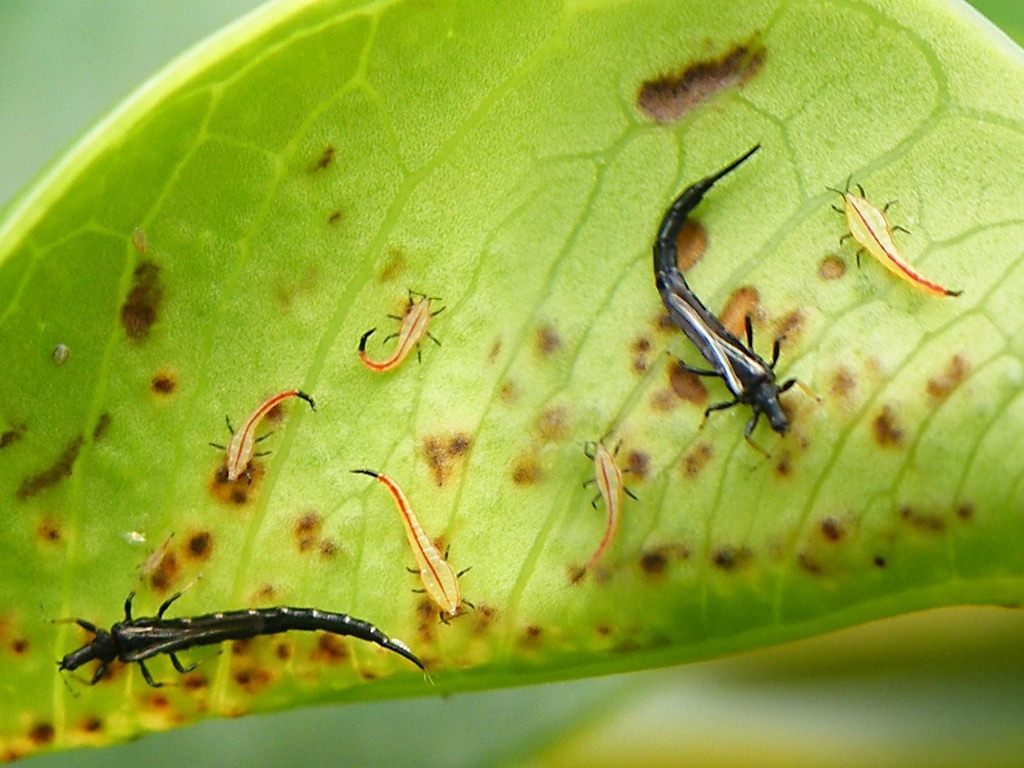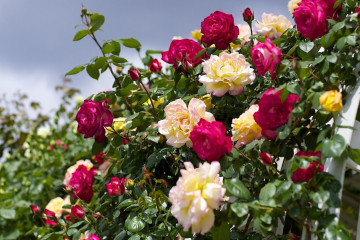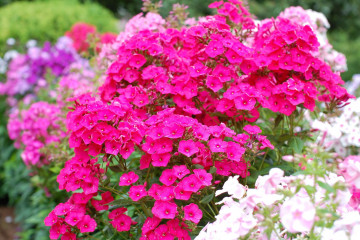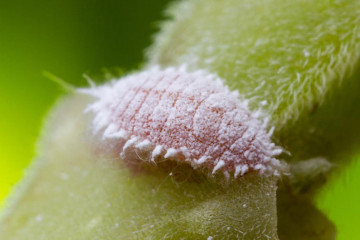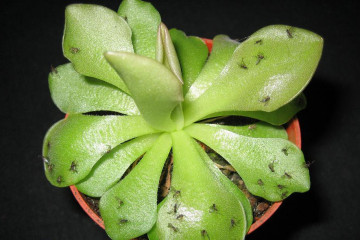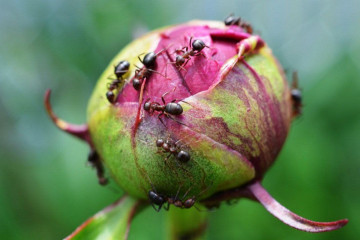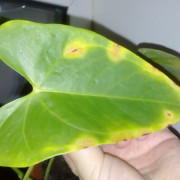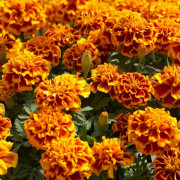Thrips on roses - how to get rid of parasites
Content:
Roses are a favorite garden shrub. In order for the plant to fully develop and bloom magnificently, it is necessary to periodically process it from pests. The most vicious of these are thrips. It takes a lot of effort to deal with them. Therefore, one should act at the first signs of damage, and also pay increased attention to prevention. After all, thrips belong to the category of pests, which are easier to keep out of the flower than to deal with them later.
Thrips - what is it on roses
This pest is characterized by a small size, the length of its body is 0.3-1.2 cm. Thrips belong to the order of vesicle insects. They are found almost everywhere.
The insect has well-developed limbs equipped with suction elements, therefore it easily moves on any surface. Due to the excellent functionality of the oral cavity, the pest easily pierces plant tissues and feeds on cell sap.
Thrips go through 3 phases of development: eggs, larvae, adults. Depending on the stages, the shade of their torso also changes. The larvae are light in color, and the adults are brown or black.
The fight against thrips is complicated by the fact that they become susceptible to the action of drugs only at certain periods. The insect lays eggs under the surface of the leaves, so it is pointless to take any action at this stage. At the end of the life cycle, thrips on roses also become inaccessible, as they move to the topsoil for wintering.
The causes of the appearance of the pest, the damage they cause
Thrips are active in dry weather and temperatures above +25 degrees for a long period. In winter, their larvae live in the upper layer of the earth under fallen leaves. And with the arrival of spring, they begin to search for succulent grass, therefore, weeds are primarily affected. When their leaves coarsen and become not so juicy, the pest moves to an ornamental shrub. At this time, you can find thrips in rosebuds, on young leaves.
Provoking factors:
- purchase of an infected seedling, since it is impossible to identify the egg-laying of the pest inside the leaves;
- adjacent areas where pests live.
Thrips cause serious damage to roses. But most often, a lesion can be detected only by light spots on the leaves, darkened edges of the petals, deformed flowers and buds.
Shrubs, weakened by the vital activity of pests, become vulnerable to fungal diseases. In this case, the development of roses completely stops.
It is not always possible to immediately determine that a shrub is affected by this pest. You can be convinced of the assumption if you pick several flowers and shake them over white paper.
Thrips control methods
You can remove the pest on roses with the help of professional chemicals and folk remedies. They need to be applied in a complex manner, which guarantees complete elimination of thrips. But it should be understood that it is possible to cope with the pest only if all the terms for the processing of the bushes are observed. Otherwise, the desired result will not be achieved.
Preparations in the fight against thrips, the best remedies
Chemical and biological agents allow you to quickly and effectively remove the pest on roses. But their disadvantage is that when repeated treatments are carried out, they can be addictive. Therefore, it is recommended to constantly alternate preparations.
Effective remedies:
- "Confidor Extra". A systemic preparation that, when it gets on the surface of the leaves, spreads to all parts of the shrub, which does not require uniform spraying. To prepare a working fluid, it is necessary to dissolve 2 g of powder in 10 liters of water. The protective effect lasts up to 1 month.
- Aktara. A highly effective drug that causes paralysis of thrips, and then their death. Begins to act in half an hour after treatment. You need to apply at the rate of 8 g per bucket of water.
- Actellik. Broad-spectrum insectoacaricide. Destroys a whole range of pests, including ticks. Created on the basis of phosphorus acid. It is not recommended to use it at temperatures above +25 degrees, as it can cause burns. To prepare the working fluid, it is necessary to dissolve 10 ml in a bucket of water. The protective effect lasts up to 2 weeks.
- Aktofit. A biological product that, in addition to the active substance, contains vitamins, supplements to maintain the immunity of the rose. To prepare the working fluid, it is necessary to dissolve 10 ml of the product in 1 liter of water, which is enough for treating shrubs up to 1 m high. The advantage of this product is that it can be used at temperatures above +28 degrees, when thrips are especially active.
- Akarin. Biological product based on avertin N. Possesses contact-systemic action. Starts working in 8-16 hours, depending on weather conditions. To prepare the working fluid, initially the contents of the ampoule must be dissolved in 100-200 ml of water, and then only brought to a total volume of 1 liter. The treatment should be carried out one day before the rain to be effective.
Rose processing should be done in the morning after the dew has melted. Otherwise, the solution, along with drops of moisture, will drain into the ground. Also, a good time to process bushes is the evening at sunset, when the heat comes down.
How to get rid of thrips on roses using folk methods
You can also remove pests with the help of folk remedies. They are effective in low thrips populations and as a prophylaxis.
Recipes for preparing effective remedies:
- Squeeze 5-6 cloves of garlic into 0.5 liters of boiling water, mix thoroughly. Soak the mixture for 5 hours, and then peel. Spray the bushes with the resulting solution, evenly treating the leaves on both sides.
- Dry and grind the dandelion root to a powder consistency. Then pour 50 g of the resulting component with 1 liter of warm water, leave for 10 hours. Clean before spraying.
- Grind leaves, shoots or flowers of marigolds. Pour 60 g of raw materials with 1 liter of water, stand for 72 hours. Clean the solution before spraying.
- Cut 200 g of tomato tops and pour 1 liter of water over it. Soak the resulting mixture for 5 hours, and then clean. Use for spraying bushes as a preventive treatment.
For better adhesion of folk remedies to the surface of leaves and shoots, it is recommended to additionally add dishwashing liquid or pet shampoo. This will enhance their effect and reduce the consumption of the solution.
Calendar of rose treatments from pests and diseases
In order to prevent roses from being affected by thrips and fungal diseases, it is necessary to adhere to the processing schedule throughout the season.
You need to start spraying rose bushes in early spring, when their active vegetation has not yet begun. During this period, it is recommended to use a 1% Bordeaux mixture. It is necessary to process the shoots and the topsoil under the bush with the solution. Again in the spring, you can process the bushes with signs of black spot and pests in mid-April. At the end of May, when the bushes are preparing for flowering, it is recommended to use biological products.
In summer, roses need to be treated with insecticides only when signs of thrips activity appear. And as a prophylaxis, you can use folk remedies, carrying out the treatment once every 2 weeks.
In autumn, the signs decrease, and the pests begin to prepare for wintering. Therefore, during this period, it is necessary to remove all fallen leaves, dig up the soil at the base of the bushes. After that, treat the shoots and the topsoil with a 1% solution of Bordeaux mixture.
Prevention of spread
You can remove this pest from the garden and prevent its reappearance with the help of simple preventive measures. Indeed, as you know, it is easier to prevent a problem than to get rid of it later.
Preventive measures:
- Every year in the fall, you need to collect fallen leaves and remove damaged, dry shoots on the bush.
- The topsoil under the roses should be periodically treated with insecticides.
- Use spruce branches for cover, not dry leaves.
- Do not leave protective mulch under bushes until late spring.
- Weed the rose garden regularly and loosen the soil under the bushes.
- Apply folk remedies and biological preparations even in the absence of signs of damage.
- Timely get rid of fungal diseases that can weaken the plant's immunity.
- Avoid thickening of the plantings, the bushes should be well weathered.
- When buying a new plant, it is necessary to treat it with any chemical preparation against pests, even in the absence of traces of their vital activity.
- Buy seedlings only from trusted sellers.
You can get rid of thrips on roses only with comprehensive control measures. In this case, you need to pay attention to the choice of funds and observe the processing time. Otherwise, all efforts may be wasted.
